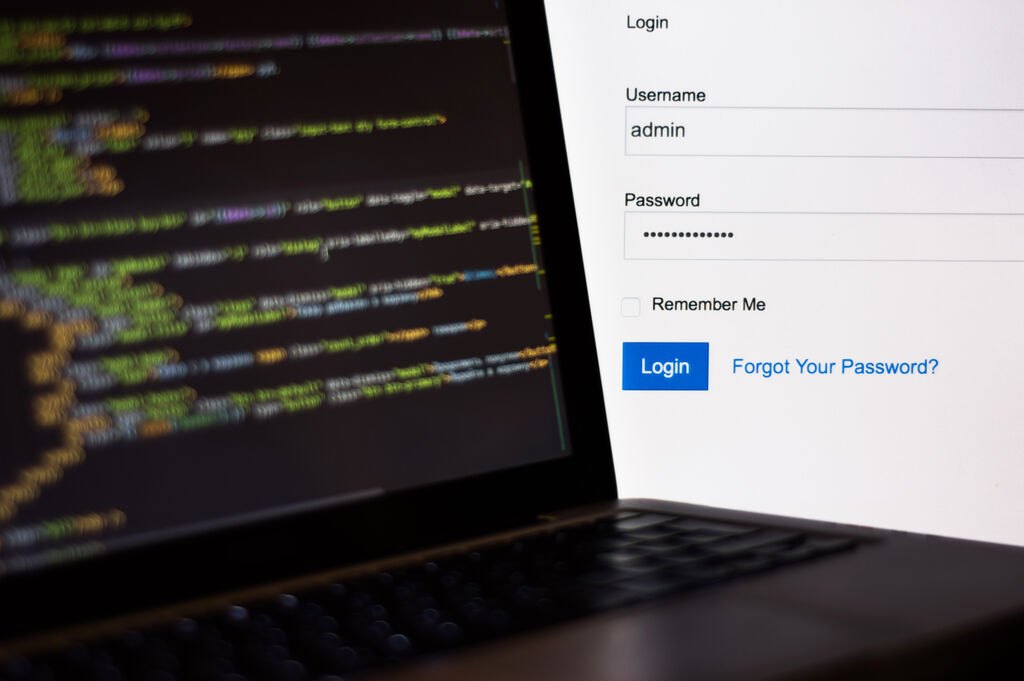Social Engineering
Exploiting the human element
Real phishing obtains real results
Scottie Cole is one of the best in the business. In this video, he reveals some of his best tips and tricks for setting up phishing campaigns to harvest credentials and/or install payloads on clients’ networks.
Test The
human element
Social engineering is a crucial aspect of a complete security penetration test. Many of our clients are often shocked by how effortless it is for our team to obtain access. We utilize a variety of strategies that are specifically designed to persuade your team to provide us with access to your systems and data center.
Through these techniques, we are able to simulate real-world scenarios and identify any weaknesses or vulnerabilities in your security measures. Our detailed report will provide you with a comprehensive understanding of your security posture and help you justify the need for increased cybersecurity investments.
Even the toughest security defenses will fall victim
Social Engineering techniques often get our foot in the door to launch exploitation tools or plant a remote access device.

Physical Social Engineering
Our first step involves significant research on your organization’s line of business, communication style, and employee behaviors. We’ll learn as much as we can about your group to find the most effective style of attack, and we’ll also work directly with your security team to ensure we’re targeting the areas you need assessed. Our attack plans range from using branded clothing easily obtained from local sources to creating fake credentials. In many cases, we’ll use no tangible physical items and simply rely on our communication skills to establish credibility with the targeted staff members.

Phishing
Why Phish Your Own Team? Despite training and technical countermeasures, phishing continues to be a highly effective way to breach security defenses. Our team sends a convincing email to your organization in an attempt to gain user credentials and to measure the effectiveness of your security awareness program. From there we can use the credentials to attempt further system access or we can stop there. Either way your report gives you the details you need to train your team not to fall for a phish again.

Specialized Phishing
Other phishing techniques can be leveraged as well. Spear phishing uses highly targeted emails to gain information or access without triggering security countermeasures. In vishing, also known as voice or phone phishing, engagements, Raxis calls your team and attempts to convince them to give us access through passwords or other sensitive information. Smishing or SMS phishing is just another way that hackers attempt to gain information, and our team provides individual attacks as well as combined attacks including any of the above.

Follow through: finish the hack
It’s not enough to just gain access. During Physical Social Engineering, our team attempts to clone employee badges to gain physical access to your buildings and even higher security areas such as data centers. Once in, we may install a device that allows us to prove we can access your internal systems remotely.
When performing Phishing, we attempt to gain access to company VPNs, email, or any other technology that we can leverage. This proof of concept is invaluable in justifying budgets or uncovering risks further inside the system.
F.A.Q.
Frequently Asked Questions
If you are installing new systems or performing new training now, then we recommend you complete those before beginning your PSE. Usually, however, there’s no time like the present. If you have known issues that you haven’t corrected, it may be a budget issue. If so, a Raxis PSE engagement can give you the proof your management team needs to see that the changes are a high priority.
The Raxis Penetration Testing team is second to none at pinpointing real world security risks by using the same tools and techniques as a malicious attacker. We’re all in the United States (with many of us based in Atlanta), most of us have at least 10 years of experience, and pentesting is our primary expertise. With so many technology defenses prevalent today, a pentester must understand every aspect of security and the latest techniques to bypass those many controls. The Raxis crew never stops learning the latest exploits, and we have a ton of fun sharing our knowledge. We don’t do checkbox security, and we never will.
We always recommend that our social engineering tests be used as training instead of as judgements. The employee who falls for a Raxis phish is often the least likely to fall for a malicious phish. Our social engineering engagements all provide clear reports of our attacks and how your team performed. When you use these reports as training tools and reward employees who report suspicious behavior and communications, your whole team becomes stronger.
A social engineering assessment is a simulated test that mimics actual threats, such as malicious email attachments and telephone pretexting. It helps organizations identify vulnerabilities and assess their level of readiness against social engineering attacks. Anyone concerned about their organization’s security should consider a social engineering assessment.
By demonstrating how an actual attack would occur, cybersecurity experts can identify and seal vulnerabilities before they’re exploited. Employees who experience simulated social engineering attacks are more likely to take security recommendations seriously. This awareness training helps prioritize response efforts.
Social engineering attacks evolve rapidly, taking advantage of the latest trends. An assessment constructs multiple scenarios and threat pretexts, customizing solutions for your organization. With this knowledge, employees can engage in online activities confidently, knowing they’re fully protected.
In today’s digital age, the importance of secure networks cannot be overstated. While external threats often take center stage in conversations about cybersecurity, internal network security is equally crucial. With a social engineering assessment from Raxis, organizations can gain valuable insight into the vulnerabilities present within their networks. By identifying potential weaknesses through thorough testing, Raxis can help organizations prioritize targeted network security solutions. Our detailed reports and recommendations provide actionable steps, such as implementing network segmentation and improving incident response, to help ensure that your company’s internal network is as secure as possible.
Implementing recommendations from the assessment not only helps to improve security within an organization, but it also shows a strong level of commitment to keeping sensitive information safe. This is crucial for gaining the trust of clients, employees, suppliers, and stakeholders. For financial companies and those handling sensitive customer data, meeting regulatory requirements (such as FFIEC) is a crucial step in displaying dedication to protecting valuable data. By taking proactive measures to strengthen security, organizations can demonstrate their commitment to safeguarding confidential information and fostering a secure environment for all involved parties.
Learn more about our
Social Engineering Services
Setup a chat to discuss how Raxis can tailor a customized social engineering assessment for your organization.


Social Engineering remains one of the most effective hacking techniques
Never underestimate the power of social engineering. Some of the most secure operations in the world are breached by fairly simple social engineering tactics.
Highly Effective Hack
In the modern era of rapidly evolving technology, social engineering has become a significant threat to corporate security. Social engineering is a tactic used by cybercriminals to manipulate human psychology and trick individuals into divulging confidential information or granting unauthorized access to computer systems. Social engineering attacks can have devastating consequences for companies, ranging from financial loss to reputational damage.
Employees are victims
With even less risk, social engineers email, call, and text your employees in order to steal their credentials by deceiving them with realistic requests and websites. Employees who share passwords across multiple accounts may be handing over access to several systems including full wireless or internal network access and even internal email access that can allow the process to start again… with a valid phish from within your network.
Data Is the Target
The goal is not to steal items from your office or retail location. Instead, it’s more about the security of your internal network and the data that you have contained within it. Credit card numbers, product cost data, proprietary business plans, and identity theft are often the drivers for a malicious social engineer. More specifically, they want to gain unrestricted access to your internal network, whether via a device installed onsite or through a wireless connection.